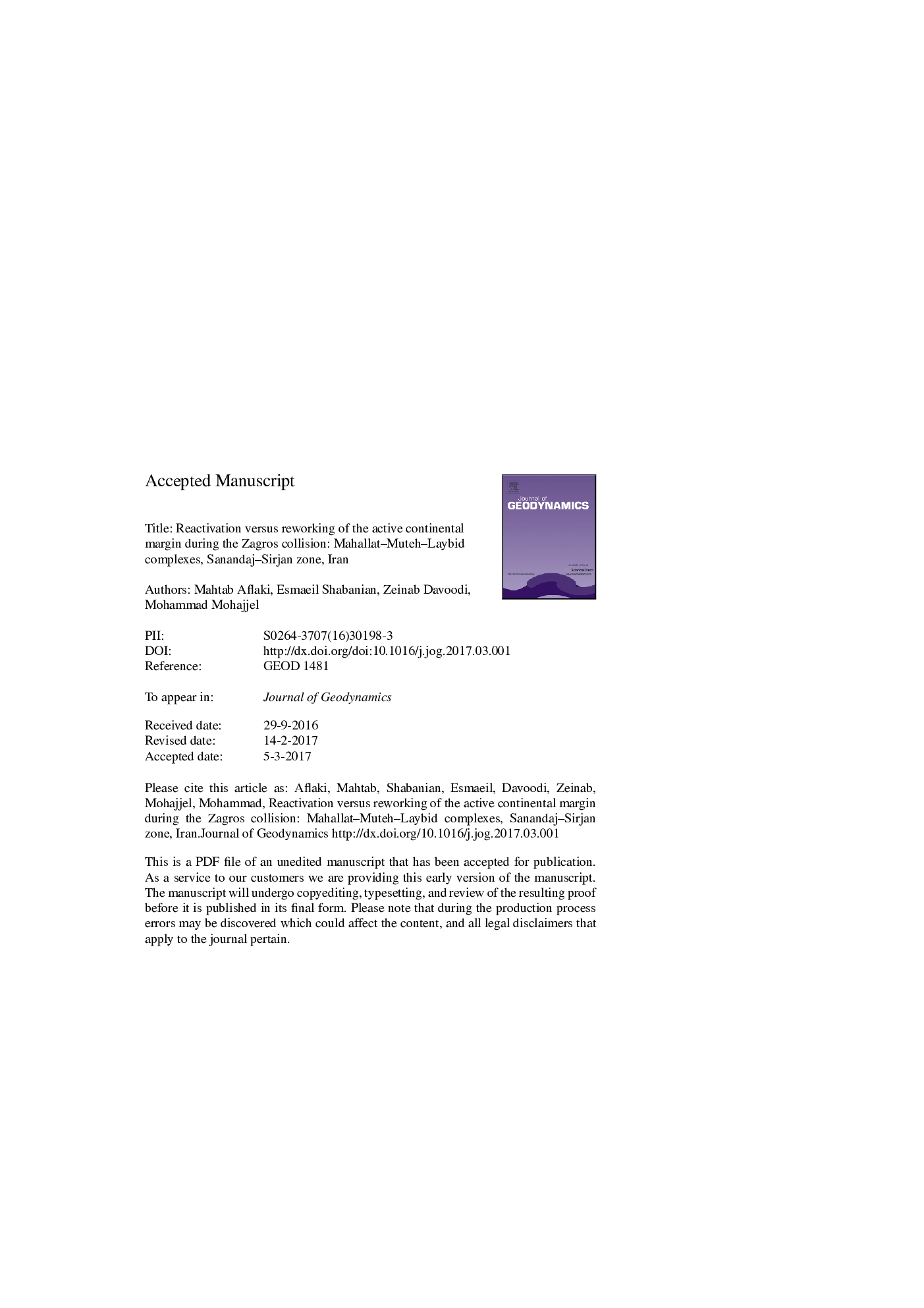| کد مقاله | کد نشریه | سال انتشار | مقاله انگلیسی | نسخه تمام متن |
|---|---|---|---|---|
| 5781213 | 1635743 | 2017 | 29 صفحه PDF | دانلود رایگان |
عنوان انگلیسی مقاله ISI
Reactivation versus reworking of the active continental margin during the Zagros collision: Mahallat-Muteh-Laybid complexes, Sanandaj-Sirjan zone, Iran
ترجمه فارسی عنوان
واکنش پذیری در مقابل بازسازی حاشیه های قاره ای فعال در طول تصادم زاگرس: مجتمع های محله ملت-لایبید، منطقه سنندج-سیرجان، ایران
دانلود مقاله + سفارش ترجمه
دانلود مقاله ISI انگلیسی
رایگان برای ایرانیان
کلمات کلیدی
موضوعات مرتبط
مهندسی و علوم پایه
علوم زمین و سیارات
فرآیندهای سطح زمین
چکیده انگلیسی
Reactivation of long-lived basement faults has significant influences on further deformation of collision zones. Three major inherited pre-collisional NW-, N- and NE-trending basement discontinuities have played important roles on the structural and tectono-sedimentary evolution of the Iranian micro-continent in the northeastern part of the Gondwana super-continent. Sanandaj-Sirjan zone (SSZ), known as the metamorphic belt of the Zagros orogeny, marks the SW margin of the Central Iran. SSZ is formed as a result of the Arabia-Eurasia collision and its general trend of deformation coincides with the NW structural trend of the collision. The NE-trending Mahallat, Muteh and Laybid complexes in the middle part of the NW-trending SSZ are the exception and have a trend almost normal to the NW-trending Zagros. A combined methodology of remote sensing, geometric and kinematics analyses complemented by field work was used to reconstruct the history of deformation in the Zagros hinterland since the earlier stages of collision to the present-day. Our results reveal the key role of the preexisting discontinuities of the Iranian basement in both the kinematics and structural pattern of the middle part of the SSZ. These basement faults have acted as main boundary conditions changing the collisional fabric perpendicular to its overall trend. Progressive deformation and the related changes during collision have caused drastic changes in the kinematics of the boundary faults. The establishment of dextral transtension in the SSZ has had secondary influences on the pattern of deformation by local clockwise rotation and localized dextral shear in the southern parts of the area of interest. This study highlights the significance of long-lived pre-existing structures in the deformation of collision zones. Such basement faults are capable to change both the pattern and kinematics of deformation of the adjacent areas involved in a continental collision.
ناشر
Database: Elsevier - ScienceDirect (ساینس دایرکت)
Journal: Journal of Geodynamics - Volume 107, June 2017, Pages 1-19
Journal: Journal of Geodynamics - Volume 107, June 2017, Pages 1-19
نویسندگان
Mahtab Aflaki, Esmaeil Shabanian, Zeinab Davoodi, Mohammad Mohajjel,
